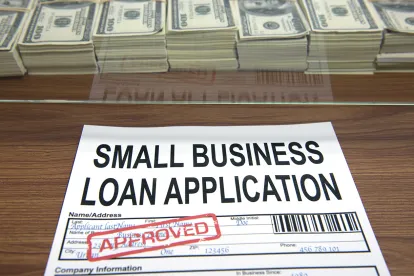Highlights
New SBA guidance says PPP borrowers of under $2 million are granted safe harbor and deemed to have made required good-faith certification of necessity. Individual circumstances of borrowers of PPP loans of $2 million or more can form an adequate basis to make the required good-faith certification. PPP loans of $2 million or more are subject to review; borrowers who lacked an adequate basis for the good-faith certification will be able to repay the loan without forgiveness, but also without further enforcement action
The Small Business Administration (SBA) has issued additional guidance via its frequently asked questions that extends the safe harbor period to return Paycheck Protection Program (PPP) loan funds, provides an additional safe harbor for certain PPP loan recipients regarding their good faith certification of need and offers insight on the SBA’s criteria when reviewing the good-faith certification of need for a PPP loan.
The guidance also provides small businesses who have applied or are considering applying insight on the SBA’s intended approach to auditing the good-faith certification for PPP loans.
Extension Until May 18 of Safe Harbor Period to Return PPP Loan
The SBA posted an interim final rule on May 8, 2020, that any small business that applied for a PPP loan and repaid the loan in full by May 14, 2020, will be deemed by SBA to have made the required certification concerning the necessity of the loan request in good faith.
In Question 47, the SBA extended the date to qualify for the repayment safe harbor to May 18, 2020. There is no need to request an extension as the SBA will implement the extension through a revised interim final rule.
Good Faith Certification of Need Safe Harbor
The SBA, in Question 46, reiterated that when submitting a PPP application, all borrowers must make a good-faith certification that “[c]urrent economic uncertainty makes this loan request necessary to support the ongoing operations of the Applicant.” This FAQ also states that the SBA will provide safe harbor to borrowers that, together with its affiliates, received PPP loans with an original principal amount of less than $2 million. These borrowers will be deemed to have made the required certification concerning the necessity of the loan in good faith.
The SBA offers as rationale that this safe harbor threshold is appropriate because borrowers of this amount are generally less likely to have access to adequate sources of liquidity in the current economic environment.
The SBA believes that offering this safe harbor to borrowers of smaller amounts will promote economic certainty and allow borrowers with more limited resources to endeavor to retain and rehire employees. This guidance provides a significant number of borrowers with comfort after previous guidance caused panic and second-guessing when it instructed borrowers to take into consideration their current business activity and their ability to access other sources of liquidity. In the absence of guidance from the SBA as to the criteria that would be used to evaluate the good-faith certification, some borrowers, who would now be covered by this safe harbor, opted to return PPP funds to avoid the risk in the face of the unknown.
It is not clear from the SBA’s guidance if the new safe harbor for borrowers of smaller amounts applies to loans already granted and applications already submitted, or if it will also apply to applications going forward, or whether borrowers who returned funds can reapply and rely on the new safe harbor.
Borrowers Without Safe Harbor Subject to Review
The SBA restated that all loans of $2 million or more will be subject to review for compliance with PPP Interim Final Rules and the Borrower Application Form requirements. If the SBA determines that a borrower lacked an adequate basis for making the good-faith certification that the PPP loan was necessary to support its ongoing operations in light of current economic conditions, the agency will seek repayment of the outstanding PPP loan balance and will inform the lender that the borrower is not eligible for loan forgiveness.
If the borrower repays the loan after receiving such notification, the SBA will not pursue any further enforcement action or referral to other agencies for enforcement action.
Considerations for Borrowers Without Safe Harbor
While borrowers of amounts of $2 million or more do not qualify for the safe harbor provided in the latest guidance, the SBA acknowledges that individual circumstances of borrowers of larger amounts in light of the guidance and the language of the certification may still form an adequate good-faith basis for making the required certification. Businesses who obtain PPP loans of $2 million or more should carefully analyze the certification made on the date of application and document the conditions upon which it makes its determination that the PPP loan is necessary.
There is no bright-line test to determine whether – given the global pandemic – the loan would be necessary to support ongoing operations. Borrowers should consider and document the following along with any other particular circumstances that can evidence need for a PPP loan due to the coronavirus outbreak:
-
Adverse impact on a business – Identify specific adverse impact experienced by the business as a result of the global pandemic. Identify the specific uncertainties causing the concerns and document the reasons for the certification.
-
Cash-flow situation – Consider whether the business has sufficient cash and receivables to continue to meet operating expenses, particularly the ability to pay employee wages and benefits
-
Liquidity and access to capital – Consider whether the business has access to other sources of liquidity and if it can be accessed in time to prevent harm to the business. Consider also whether the use of any other source of liquidity or capital is “significantly detrimental to the business” (i.e. would it cause a violation of existing loan covenants, or be on terms that are unsustainable).
-
Location – Some states have opened for business before others. For example, some states such as Georgia have started reopening and others, such as Michigan and Virginia, have hinted at or implemented longer stay-at-home orders. The longer a business is likely to be shut down, the more likely it will be in a position to make the good-faith certification.
-
Industry – Some industries have been affected more than others. The more a business’ industry has been adversely affected, the more likely it will be in a position to make the good-faith certification.
-
Workforce – Some businesses are facing situations in which its workforce is unable or unwilling to return to work. As such, the borrower may face uncertainty with respect to its ability to perform its operations and meet customer demand.








 />i
/>i
